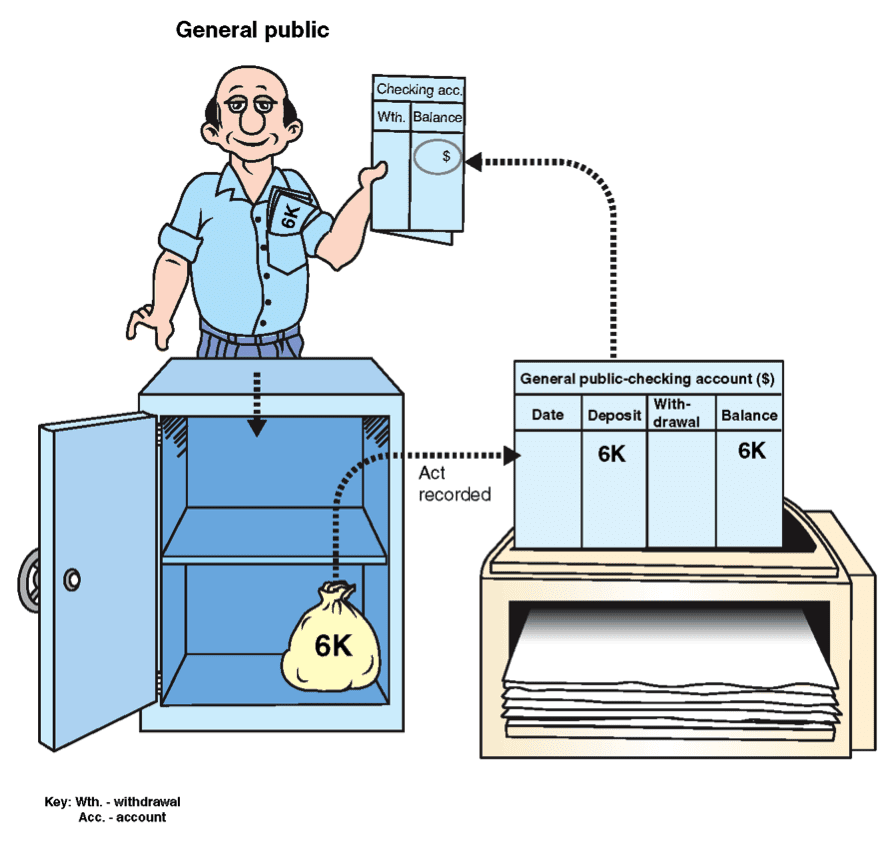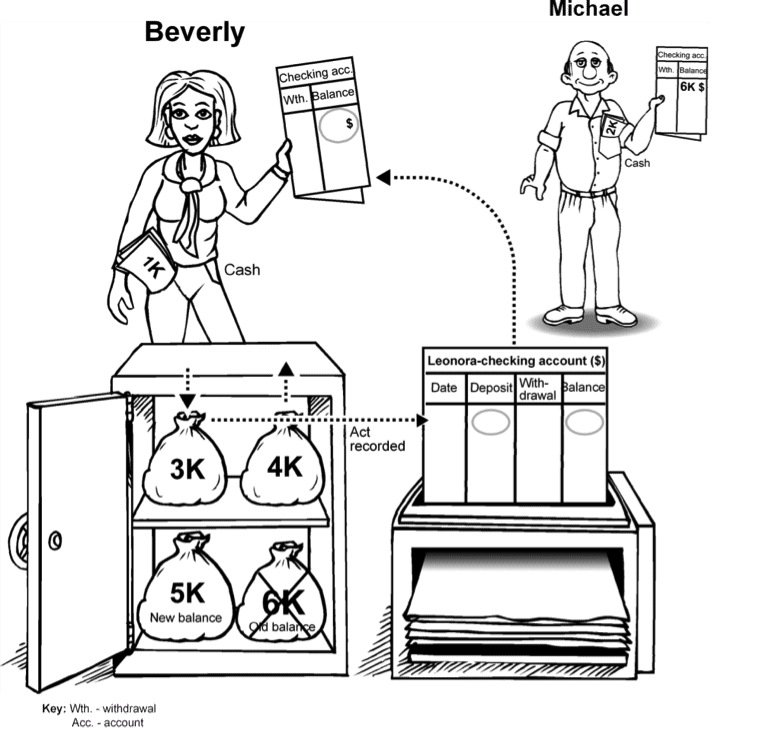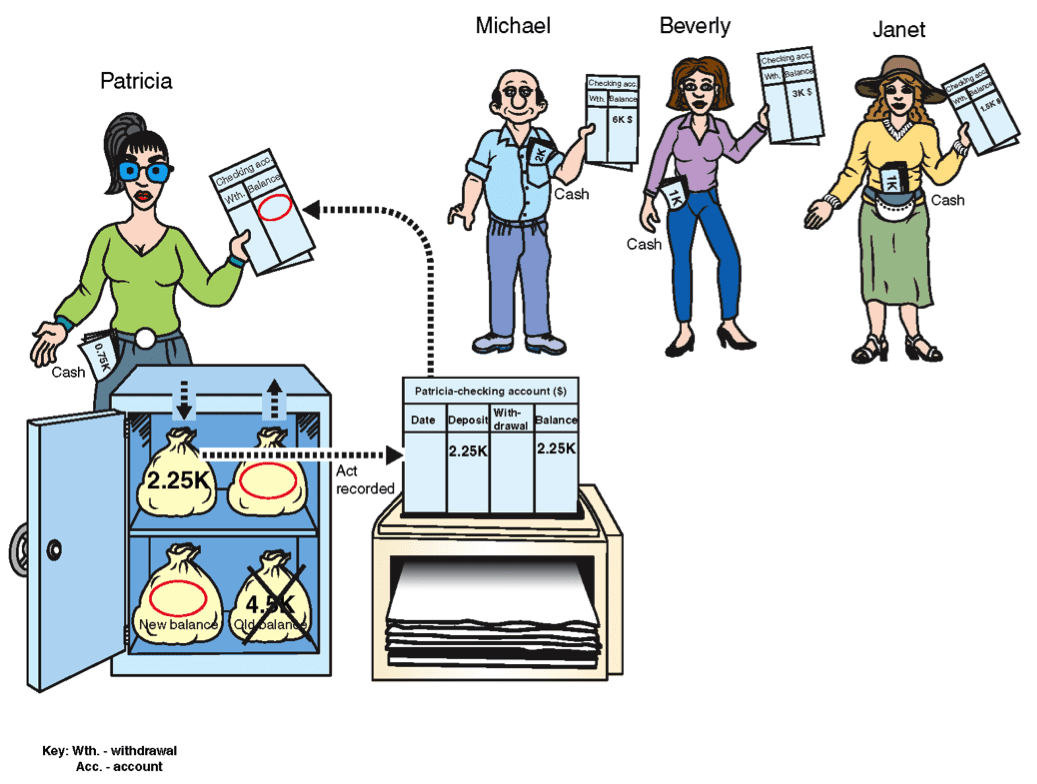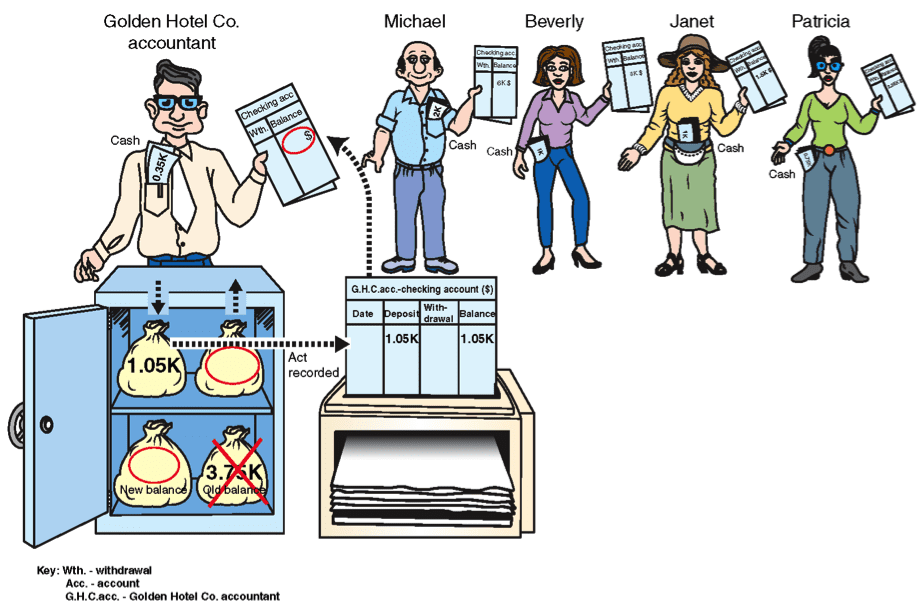This scenario is presented as an exercise. Fill in the number in the circle shown in the illustration.
Scenario: The public keeps 75% of its money in bank accounts and 25% in cash.
The previous section described how Michael’s $8,000 gift from abroad created an increase in financial resources.
This increase relates specifically to a country where the citizens keep 50% of their money in bank accounts and 50% of their money in cash. Had these citizens instead kept 75% in bank accounts and 25% in cash, then the increase in each financial component would have been different, as can be seen in the next slide.
This scenario is presented as an exercise. Fill in the number in the circle shown in the illustration.
Scenario: The public keeps 75% of its money in bank accounts and 25% in cash.
Michael receives a gift of $8,000 from abroad. He deposits 75% ($6,000) in a bank account and keeps 25% ($2,000) in cash.
This situation is presented in the following illustration.

The money supply in the country has grown by $8,000.
The reserve ratio would be 1= $6,000/ $6,000
First loan
Beverly wants to set up a furniture factory, and requests a $4,000 loan. The bank grants the request, and loans her $4,000 in cash.
Since people in this country keep 75% of their money in bank accounts and 25% in cash, Beverly keeps
$1,000 in cash, and deposits $3,000 into her bank account.
The situation is shown in the illustration:

- .$5,000 remains in the bank vault.
- The money supply in the country has grown by $12,000.
- The bank is able to continue lending.
Fill in the numbers in the circles shown in the illustration.
Second loan
Janet also wants to set up a trouser factory, and asks for a $2,000 loan. The bank grants the request. Janet also keeps $500 in cash, and deposits the balance into a bank account.
The situation is shown in the illustration:

- $4,500 remains in the bank vault.
- The money supply in the country has grown by $14,000
The bank is able to continue lending.
Fill in the numbers in the circles shown in the illustration.
Third loan
Patricia wants to set up a small business. She asks for and receives a $3,000 loan.
The situation is shown in the following illustration:

- $3,750 remains in the bank vault.
- The total money supply in the country has grown by $17,000.
The bank is able to continue lending.
In order to reach a reserve ratio of 1/4 (0.25), only numbers that are not rounded-off must be used. The calculation is done here with rounded-off number, so that the final result will be approximate, but not exact.
Fill in the numbers in the circles shown in the illustration.
Fourth loan
The Golden Hotel Company asks for and receives a $1,400 loan. The Golden Hotel also keeps 25% ($350) in cash and deposits the other 75% ($1,050) into a bank account.
The situation is presented in the following illustration:

- $3,400 remains in the bank vault.
- The total money supply in the country has grown by $18,400.
The bank is unable to extend any additional loans.
Summary
The increase in each financial component following Michael’s receipt of the gift from abroad in both scenarios presented above is shown in Table.
Table
| Scenario in which inhabitants keep 50% of their money in cash and 50% in checking accounts | Scenario in which inhabitants keep 25% of their money in cash and 75% in checking accounts | |
| Increase in demand deposits |
$6,400 |
$13,800 |
| Increase in cash held by the inhabitants |
$6,400 |
$4,600 |
| Increase in the money supply |
$12,800 |
$18,400 |
| Increase in loans |
$4,800 |
$10,400 |


